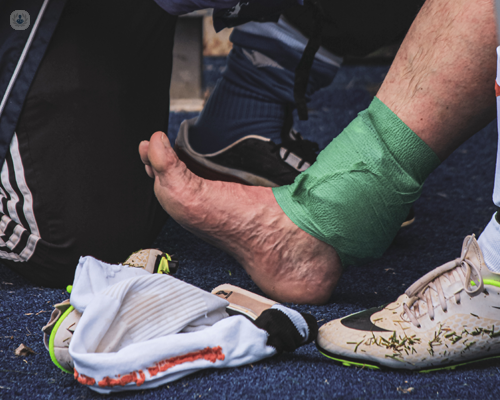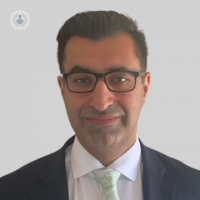It's a beautiful but risky game: All about football injuries
Autore:Football is brilliant, but also risky. Whether you’re a professional, semi-professional or love playing for your amateur team on a Sunday, injuries are a given.
Leading consultant orthopaedic surgeon Professor Bal Dhinsa, who was the academy club doctor for Charlton Athletic Football Club, answers some of the most frequently-asked questions about football injuries for players of the beautiful game.

What are the most common football injuries?
Injuries to football players commonly occur because of running, rotational injuries and from direct trauma from tackles. This may be:
- ankle sprains;
- tendon injuries;
- cartilage defects within the ankle joint;
- repetitive strain tendon injuries (tendinopathy) or;
- fractures.
How can football players prevent injuries on the field?
Techniques to help prevent injuries include neuromuscular warm-up strategies, strengthening and working on balance (proprioception). It is important to look at training programme (in cases of overuse injuries) as well as footwear and the surface on which they are playing.
What are the immediate steps to take when a football player gets injured during a game?
The first step is to stop the activity and assess for any limb threatening injuries. Once this has been excluded try to compress the area and elevate. The use of ice for short periods may help with the pain but has become controversial in recent times. Appropriate assessment by a medical professional is required, who may organise investigations.
What are the long-term consequences of football-related injuries?
This all depends on the type of injury. Often there may be no consequences, however with ankle sprains and fractures there is the risk of chronic instability and post-traumatic arthritis respectively.
Are there new treatments or technologies improving the recovery process for injured football players?
This is always constantly evolving, with the aim to speed up the recovery process but also to avoid long term consequences. The best outcomes are those management plans that involve a multi-disciplinary team approach.
If you need expert medical attention for a football or sports injury - or any assessment regarding foot or ankle orthopaedic surgery - arrange a consultation via Mr Dhinsa’s Top Doctors profile.


